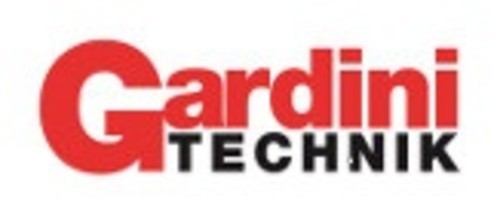
Enabling, a model for sustainable development
To deal with the environmental, economic and social crisis, the European Commission has launched the Green Deal, an ambitious programme for sustainable development. Despite the first steps towards the circular economy, the industrial sector in Europe continues to depend excessively on non-renewable raw materials and to emit 20% of greenhouse gases. The transition towards a consistent decarbonisation of the economy requires concrete measures and adequate tools; the Enabling project, coordinated by FederUnacoma and Itabia, is an interesting pilot run
With the Communication of last December, the European Commission illustrated the Green Deal for the European Union and its citizens. A strategic orientation document which outlines the development lines to be followed to face the problems related to the climate, the environment, and social justice. The 26 pages of the document frame the guiding principles that will inspire the future policies of the European Union for a decarbonisation of the economy in a dynamic, resource-efficient and competitive way. Starting with these assumptions, a great number of measures will have to be activated so that in 2050 no net greenhouse gas emissions will be generated and economic growth will be associated with a more rational use of resources. Among the many topics covered, the Green Deal stresses the need to “mobolise industry” for a transition of production systems from the linear approach of the past to a modern “circular” one. According to the Commission, a transformation of this magnitude, of the industrial sector, and of all associated value chains, will take at least 25 years (an entire generation). Therefore, to achieve climate neutrality in 2050, the consequent decisions and actions will have to be immediate, within the next five years.
Despite the alarm bells sounding worldwide, in the last 50 years, the extraction of materials has tripled and is constantly growing, depleting resources and damaging natural balances. About half of the total greenhouse gas emissions, in addition to 90% of the loss of biodiversity and water stress, are caused by a far-from-rational use of the increasingly limited, raw materials. Although it has started the transition, European industry still contributes 20% of the EU’s greenhouse gas emissions. It is still too dependent on the flow of new non-renewable materials, transformed into goods and, finally, disposed of as waste. To date, only 12% of materials used come from the recovery of waste and by-products. Given the above, we understand the value of the Enabling Project “Enhance New Approaches in Biobased Local Innovation Networks for Growth”, coordinated by FederUnacoma and Itabia in which 16 partners participate, representing 13 different countries.
The project, developed as part of the H2020 programme (CSA, Coordination Support Action), aims to stimulate the market for bioproducts obtained from renewable resources by facilitating contact between the agricultural sector (biomass producer) and the industrial sector (processor).
In the first two years of activity, specific actions were carried out to facilitate the development of the bioeconomy by focusing on the exploitation of raw materials of biological origin - residual or specially cultivated - to be used in various sectors such as green chemistry, textiles, automotive, nutraceutical, green building, etc.
In a nutshell, the activities are aimed at: estimating the national and local potential of biomass residues to be allocated to the bio-based products (BBP) industry; identifying the stakeholders - in the agricultural and industrial world - to activate the supply chains in the BBP sector; creating networks between companies, administrations, research bodies; selecting the best business and district practices within the BBP; transferring technological and regulatory know-how to potentially interested companies; organizing dissemination initiatives.
Regarding the estimate of the potential of residual biomass available in the 13 countries involved, the first step of the project was to consider a large number of types of resources deriving from the agricultural, agro-industrial and forestry sector. In addition to the quantitative aspects, the chemical-physical characterization was provided for each of these biomasses, indicating their components and possible industrial uses. Overall, the theoretical availability of these resources is around 340 million tonnes per year, a great reservoir of molecules synthesized by nature with countless industrial applications.
In Italy, the estimated biomasses are only 7% of the total value, but this is due to the fact that (unlike other countries) those of forest origin have not been considered. The focus was deliberately limited to the residues of herbaceous (27 types) and arboreal (23 types) agricultural crops, in addition to those deriving from the industrial processing of fruit and vegetables (oil, wine, preserves, juices, etc.). Overall, our country has an annual theoretical potential of around 25 million tonnes of biomass that can go from waste to valuable raw materials for the biobased industry. To exploit all these resources, in addition to the creation of local supply chains, the use of modern mechanization is important to bring efficiency to their transfer from the territory to the processing plants. The national data, shown in the table aggregated over three macro areas, was calculated with a level of detail at the provincial level in order to provide useful information for the creation of supply chains in the local area.
In addition to the rough estimates of the type and quantity of raw materials available in the area, Enabling also provides a set of tools to facilitate the implementation of entrepreneurial initiatives.
Operational support is offered both to biomass producers and to the BBP industry through coaching activities accessible on the website (www.Enabling-project.com). Interested parties can ask for information on market opportunities, innovation and technologies, scientific documents, EU and national laws and much more. Furthermore, a substantial collection of publications concerning the circular bioeconomy was created in order to guide companies in their choices. Overall, this library, accessible from the project website, consists of about 180 texts that deal with the sector from a technical, scientific, regulatory and strategic point of view. A further service activated by Enabling is the BiomassTrade platform, the virtual place (accessible online) where biomass producers and companies interested in their processing can get in touch and establish supply agreements privately. The BiomassTrade platform, without any intermediation charge or responsibility for Enabling, allows interested users to search or offer residual biomass, bio-based products and services in the various sectors of the bioeconomy. The platform operates at the EU level, but aims to connect stakeholders to facilitate the exchange of goods and services at a local level in a short supply chain perspective.
Another very important activity in the project is the identification and dissemination of the best practices of the biobased industry, to facilitate the replicability of initiatives with a high (environmental, economic and social) sustainability level. With this in mind, the project involves the development of 130 descriptive cards of virtuous case studies (20 for Italy), and the production of 5 short documentaries describing the production chains of the bioeconomy with a strong link between agriculture and industry. To date, the project partners have already selected nearly 100 best practices. From time to time, these are uploaded to a special section of the website, “The Best Practices Atlas”, where each of them is illustrated and geolocated. Finally, to provide inspirational reference models, FederUnacoma and Itabia have recently made three of the five videos envisaged by the project (see box page 18), while the rest are being finalized.
All these activities, plus others still in progress, will be shown and discussed at the final conference of the Project, which will be held in Bologna as part of the 2020 EIMA International Exhibition.
The Enabling Project Video
The disclosure of the project involves the production of short documents that present successful experiences in terms of sustainability
Video 1 - Gaetano Spitale’s farm (Italy)
Innovative farm; prickly pear production chain; agricultural residual biomass (cladodes); bio-economy; water savings; renewable energy; scientific research.
The video shows how traditional agriculture can find important economic outlets not only in the food sector, but also in the bioproducts industry. To this end, a farmer was interviewed, owner of a farm in Sicily cultivating prickly pears. For several years, Gaetano Spitale has been selling large quantities of plant prunings (cladodes) to pharmaceutical companies in Germany and Austria. Today he also supplies these biomasses to a recently activated biorefinery in Sicily. It is interesting to see how Spitale’s approach to bioeconomy is associated with a series of technical and cultural innovations that generate economic and environmental advantages in the local area. To this end, this enterprising farmer has been collaborating for some time with excellent technologists and researchers.
Video 2 - BIONAP company (Italy)
Agricultural biomass; biodiversity; technological innovation; green chemistry; market internationalization.
The video describes a model industrial company born from the intuition of scientist Francesco Bonina, an expert in pharmaceutical technologies. Bonina’s expertise enabled him to extract from Mediterranean plants and agro-industrial by-products (about 500,000 t/year) molecules with which to produce formulas (100,000 t/year) useful for the pharmaceutical, nutraceutical and cosmetics industry. In about 20 years of business, Bionap has grown a lot, becoming a solid company with more than 40 employees, a significant turnover, and quality products that it exports all over the world.
Bionap has created a strong synergy between the agricultural and industrial worlds through a corporate policy attentive to environmental sustainability. This is why Bionap invests many economic resources in research and communication activities.
Video 3 - AB Group (Italy)
Exploitation of agricultural residues; renewable biogas; biofertilizer (digestate); circular economy.
The video concerns a technological system for the production of biogas and digestate through the process of anaerobic digestion of organic materials of agricultural and agro-industrial origin. Biogas feeds a 600 kW generator that produces electricity (led into the national power grid) and thermal energy (transferred to the nearby greenhouses). The digestate is sold to the local farms that spread it in their fields to return organic matter to the soil. It is a perfect example of a circular economy with positive effects on the economy and the environment.








